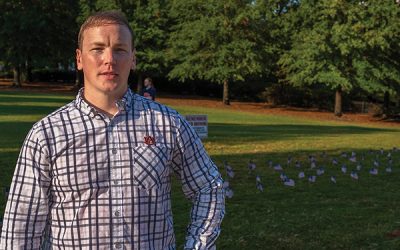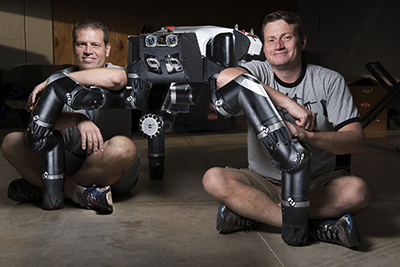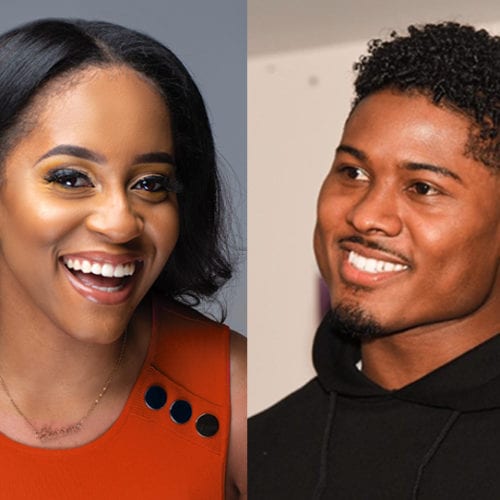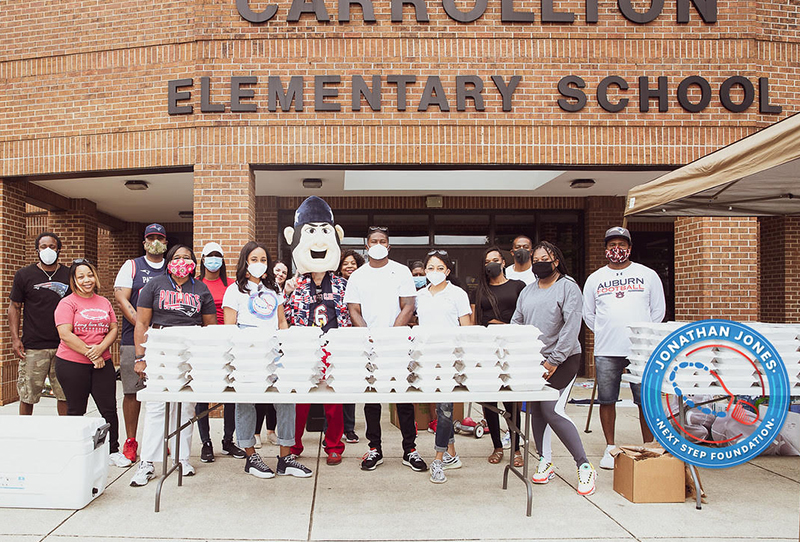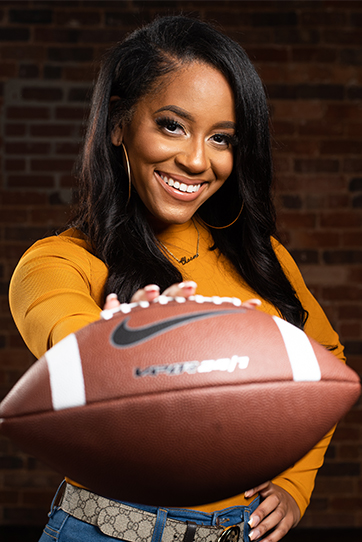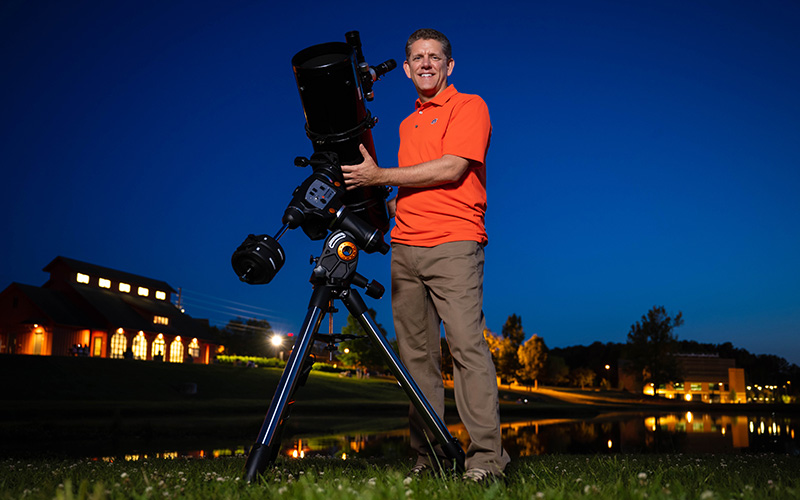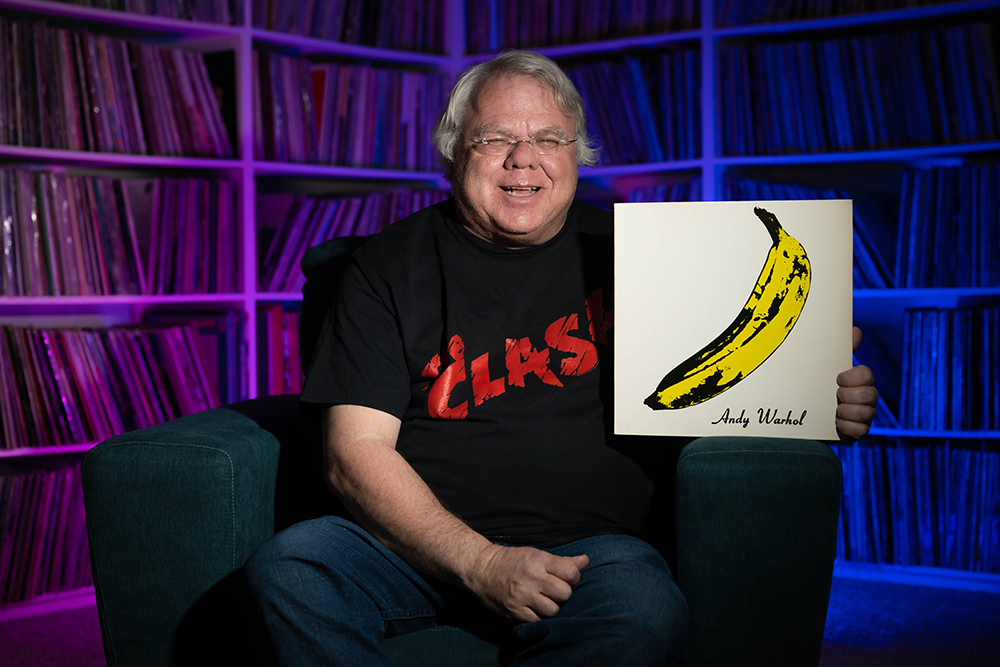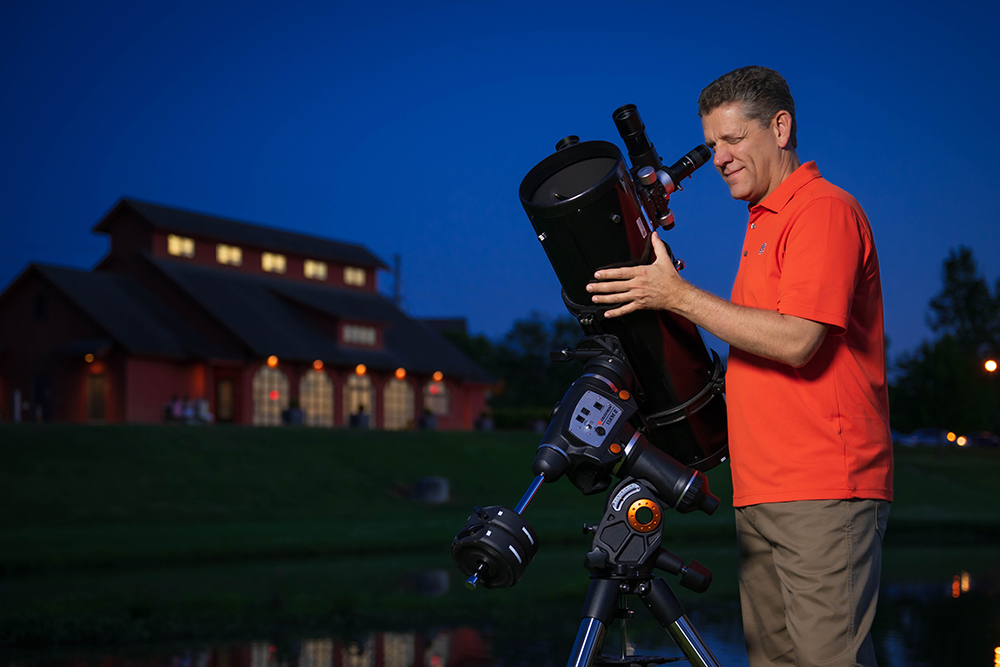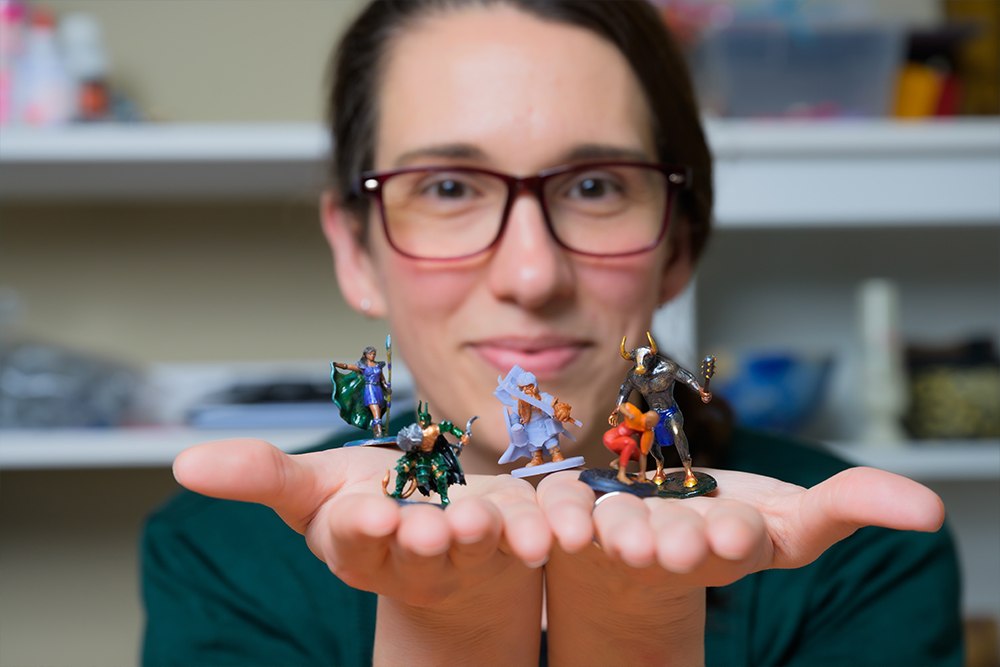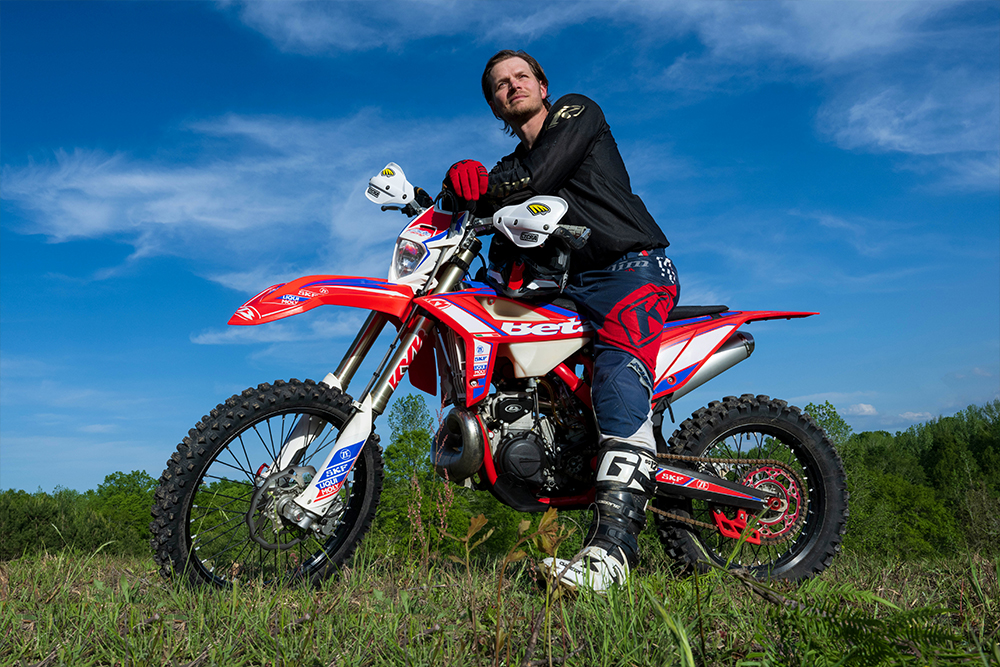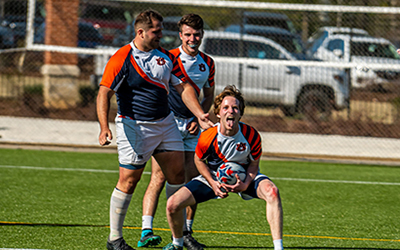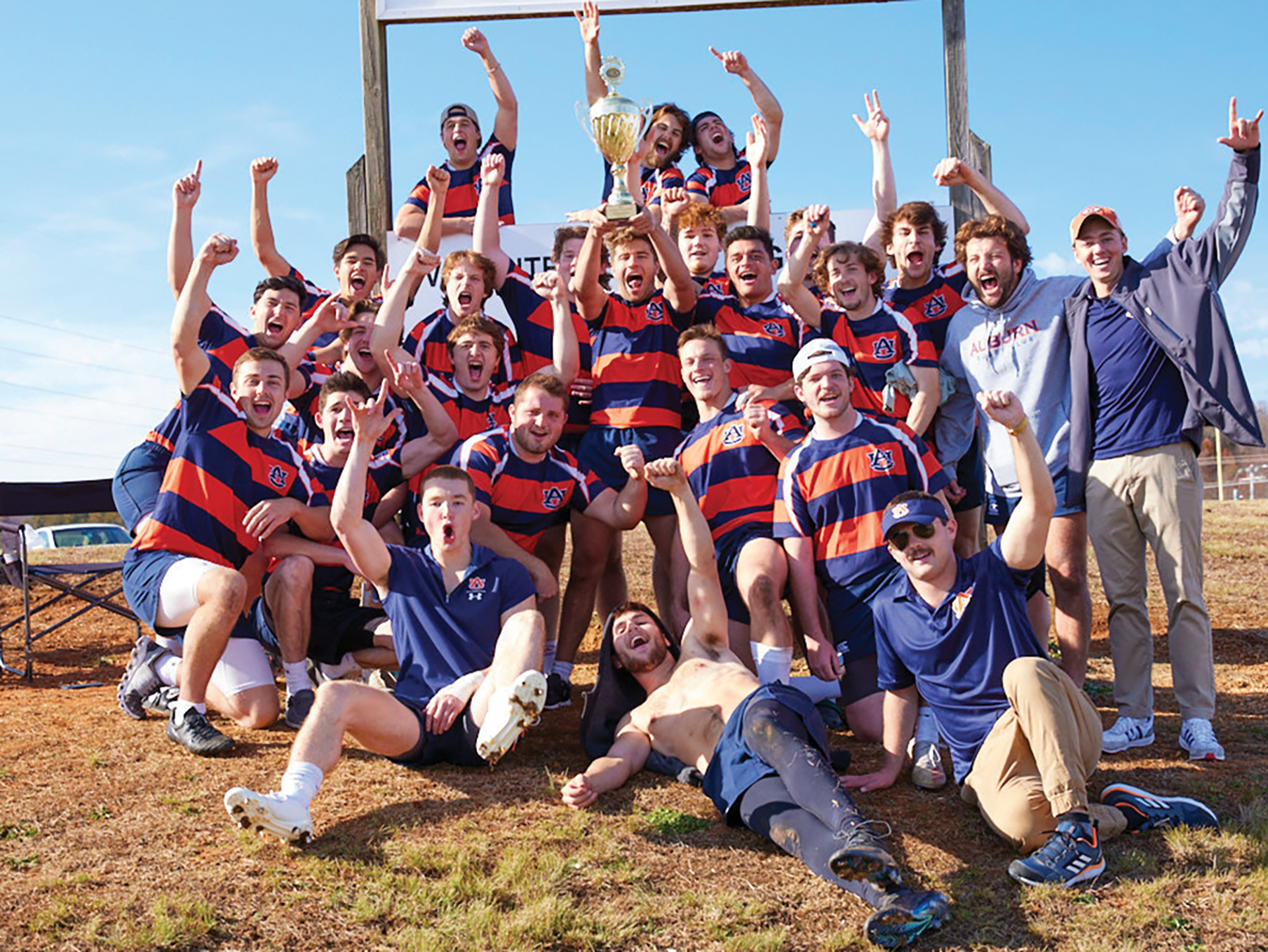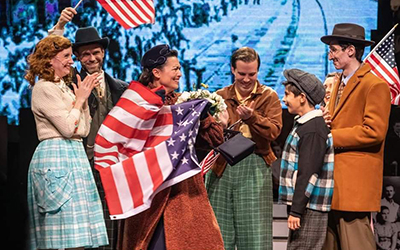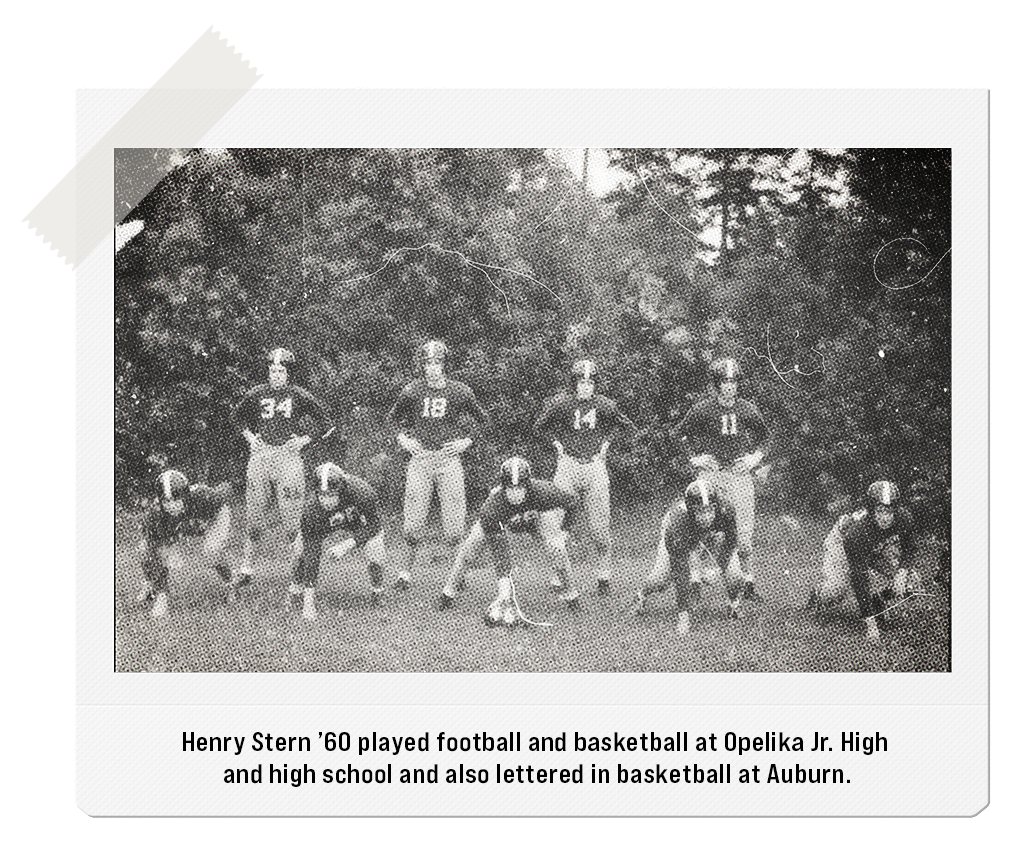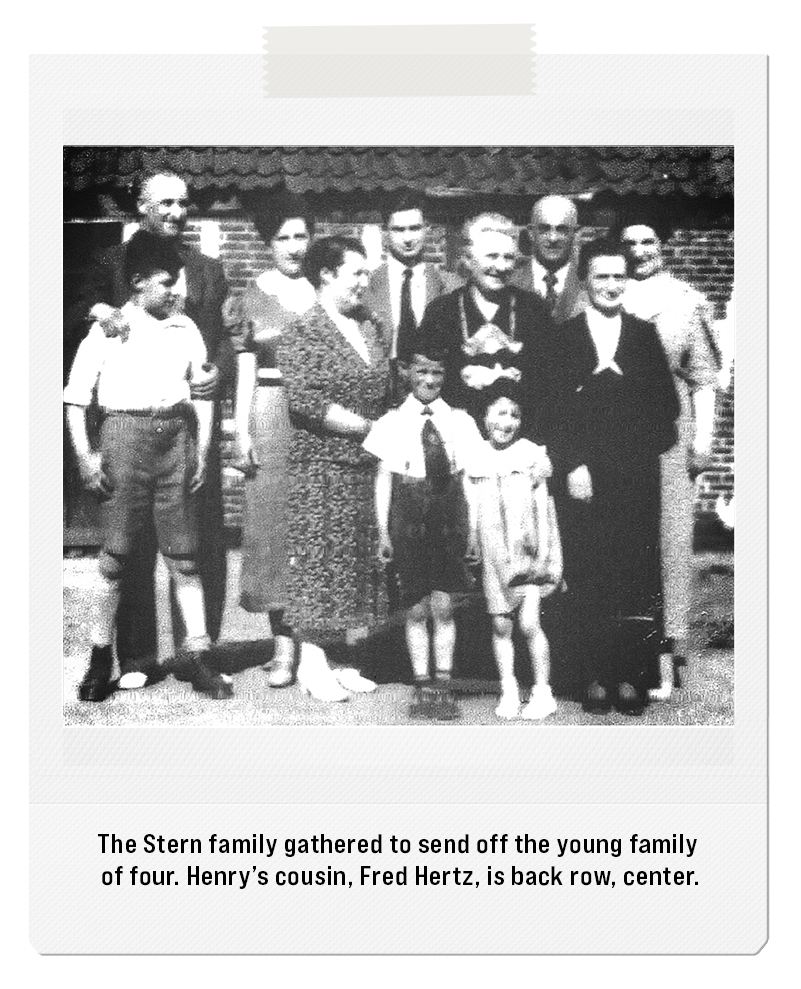A meeting at Auburn’s student-run television station launched Chloe Melas’ career as an entertainment news correspondent for VH1, CNN and NBC news.

Cowgirl Courage: Abigail Benz ’19
“Glitter and Dirt” is key to a Cowgirl’s mission for good
By Abigail Benz ’19
There is a podcast hosted by a dear friend, Dakota Dawn Johnson, that I was featured on called “the Cowgirl Confessions” that really changed my perspective on being a real-life cowgirl. I learned that cowgirls are anyone with grit and determination. They care about their communities and love their country. Cowgirls and cowboys are hardworking individuals who strive every day to be the best versions of themselves, but many just so happen to wear boots and a cowboy hat. And they have fun while doing it!
There isn’t a typical day in the life of a cowgirl—every day is full of challenges and opportunities. Obviously, I spend a lot of time with animals—from feeding and grooming to training to planning for sustainable growth. Animals require constant attention, and inclement weather is never an excuse!
I’m also involved in the business aspect of running the ranch and must ensure we are fiscally responsible and stick to our budget. There is never a shortage of projects around the ranch: mending fences and other structures, controlling weeds, maintaining equipment. The list never gets any shorter, but it makes every day unique.
When the weekends come, it’s rodeo time! Attending rodeos requires planning, coordination, and a lot of help from my extended rodeo family. I try to plan out my calendar at least one month ahead, contacting the rodeo producer, stock contractor, announce, and specialty act to see how I might help.
I also must coordinate with my committee, as I am under contract to represent the Limestone County Sheriff’s Rodeo and Sheriff Mike Blakely and participate in outreach. Sometimes that’s going to local schools, a media interview or participating in a parade. When the gates open, my favorite part is interacting with the rodeo fans. They are full of enthusiasm and questions.
My dad’s side of the family had a farm with cattle, swine and crops in Illinois that he would work at. He loved working with the animals and he definitely passed that love down to me.
Being a military family, we really did not have the opportunity to run our own ranch between the moves and deployments. Since I grew up mostly in suburban areas, my parents put me in horseback riding lessons, and eventually we leased land or stalls to have our horses. We recently purchased a ranch, Glitter ‘N Dirt Ranch, in Georgia (only an hour and a half from Auburn), where we are working to establish our permanent family-run operation. We currently have horses, goats, dogs, cats and one mini zebu cow.
I initially went into college as an equine science major at Colorado State University. I was on the rodeo team while I attended Colorado State University, but once I transferred to Auburn, I was not involved in any equestrian or livestock groups.
During my freshman year at Colorado State, I decided to walk away from horses and rodeo after a series of concussions. The thing about horses and rodeo is that no matter how hard you try to walk away, they never give up on you.
College gives you the opportunity to explore fields that you did not know existed and allows you to explore a variety of career paths. My eyes were opened by the College of Human Sciences and the Director of Global Education, Kate Thornton, to opportunities to make a difference. Farmers and ranchers are helping sustain future generations, and they need to be supported. I chose to major in global studies and minor in business to ignite a generation of cowgirls and cowboys, from all walks of life, who believe in supporting a sustainable western way of life worldwide.
The Global Studies in Human Sciences program at Auburn focuses on educating students on global issues, globalization, and how the world is interconnected.
One of the major global issues is hunger. I quickly learned that there is a need for innovators who are passionate about making a difference and that, even though I am only one person, I could combine my love of animals and my passion for helping others.

Benz when she was crowned the Miss Limestone Sheriff’s Rodeo Queen
In Nepal with Love Justice International
The trip to Kathmandu, Nepal with Love Justice International changed my life. I have always been passionate about eradicating human trafficking, and this trip opened my eyes to the need to “speak up, stand up and saddle up.” This experience formed the basis for my platform—“Cowgirl Courage”—and motivates me daily to work toward taking actions that will help eradicate modern day slavery and to assist those individuals who, through no fault of their own, have been impacted by this global tragedy.
Love Justice International trains and places monitors at borders and transit points to identify and stop trafficking as it is occurring, before beautiful lives are exploited and sold into slavery.
To date, Love Justice has intercepted over 22,000 lives to prevent them from being trafficked. Tragically, 40.3 million people live in modern-day slavery because of human trafficking. Love Justice intervenes as the crime of trafficking occurs, they can collect immensely valuable data on traffickers and their networks.
Following my Auburn study abroad, I remained in Nepal for twelve additional weeks to help eradicate labor and human trafficking throughout Southeast Asia as the anti-trafficking research and data analysis intern.
Through data analysis and investigations, Love Justice has helped authorities arrest over 900 suspected traffickers, and 31% of closed cases have resulted in convictions.

At a border monitoring station in Nepal
As Head Wrangler at Medicine Bow Lodge
Being a head wrangler at Medicine Bow Lodge in Wyoming is a once in a lifetime opportunity that I was blessed to experience. For those who do not know what a “dude ranch” is, it is a ranch used for tourism. People from all over the world can come and spend time on these ranches and experience the western way of life firsthand.
I started going to Medicine Bow Lodge when I was eight years old. On that first visit, I wore a pink cowgirl hat and pink cowgirl boots. I remember meeting the cowboys and cowgirls who were wranglers at the time, wanting to be just like them. When I was given the opportunity to be the head wrangler, I remember in one of the first groups I took on a ride, the daughter had on pink boots. It was one of my favorite memories, because it reminded me that no dream is ever too big, and you are never too young to love Glitter N’ Dirt.
As the head wrangler, I was responsible for the management of equine operations for 25 horses and up to 20 guests at any one time. Many of these guests had never ridden horses before, so it was very important to guarantee the highest degree of safety and welfare for all of our horses and guests.
I evaluated and accommodated guests’ needs, in addition to assigning the appropriate horse and riding equipment. I guided multiple trail rides daily. Working on a ranch is not only about the horses: I prepared meals for the guests, cleaned the lodge and cabins and assisted with evening activities. Not only did I get to spend time with the animals I love the most, but I also was able to spend time with people. As an eighteen-year-old who had just graduated high school, this experience sparked my interest in business and exposing the world to the western way of life.
The 38th Miss Limestone Sheriff’s Rodeo Queen
This was my first rodeo queen pageant, and they are about so much more than looking pretty. There are speeches, horsemanship, impromptu questions, written tests and interviews. These competitions are designed to determine who is the most well-rounded cowgirl to be the ambassador for the sport.
When they called my name for winning the speech award, I was excited! It’s funny, but fear of public speaking almost delayed my graduation from Auburn; I did not want to take the required public speaking course. I finally took it—online, my last semester—so you can imagine how much this award meant to me. When they called my name as the new Miss Limestone Sheriff’s Rodeo, I could not contain my excitement. I got on the horse to run my victory lap and I almost ran over the Sheriff.
2021 Miss Rodel USA First Runner-up
I am beyond proud to be the first runner-up for Miss Rodeo USA in only my second competition. In addition to being first runner-up, I won the speech, highest written test score and fan-favorite state shirt awards.
Crowned the 38th Miss Limestone Sheriff’s Rodeo Queen in 2020
When I stood on the arena floor and heard my name called, I felt like I had accomplished my dream, despite my injuries and obstacles, and was someone that eight-year-old Abigail would be proud of.
My goal in competing for Miss Rodeo USA was to leave the pageant as a better version of myself than I was when I went in, and I more than accomplished that.
I am still Miss Limestone Sheriff’s Rodeo until May when I pass down my title at the 39th Annual Limestone County Sheriff’s Rodeo. I am working hard to plan for our pageant and rodeo, so if you are near the Athens, Ala. area, I encourage you all to come out May 14th and 15th for the “Greatest Show on Dirt East of the Mississippi.”
Rodeo queens “age out” at 26, so there is still time if I decided to compete for another title. I have enrolled in Auburn University’s Graphic Design Certificate program and I am excited to grow my skillset to help further my love of the western way of life.
I have been working to get my company “Glitter ‘N Dirt” off the ground. It’s designed to inspire everyone to have the “cowgirl state of mind.” The goal is to create a brand that sparks empowerment and a passion for the western way of life.
When we initially created our business plan, we wanted to guarantee that proceeds were going back into not only the community, but into funds that help eradicate human trafficking. Glitter ‘N Dirt helps my platform, Cowgirl Courage, provide monetary support to a multitude of organizations including, A21.
We have our first big project in the works promoting rodeo and rodeo athletes in the Southeast region in a new, innovative way and I cannot wait for everyone to see the final outcome this spring. I am also working to train a new horse named Tinkerbell. She is a seven-month-old perlino American Quarter Horse. She is full of spunk, sass and of course, Glitter ‘N Dirt.
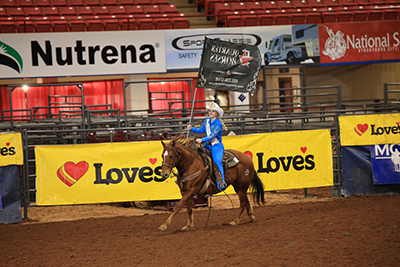
Auburn Alum and NBC Entertainment Correspondent, Chloe Melas, is Making News
Alum and Military Veteran, Curtis Pippin, Answers the Call
Life isn’t easy in the military, but transitioning out can be even harder. Curtis Pippin ’17 helps veterans adjust to civilian life one connection at a time.
Auburn Goes to Work on Rebuilding America’s Infrastructure
Roads crack. Sewage leaks and power grids fail. America’s infrastructure is falling apart. See how Auburn is providing solutions.
Auburn Alum and NBC Entertainment Correspondent, Chloe Melas, is Making News
A meeting at Auburn’s student-run television station launched Chloe Melas’ career as an entertainment news correspondent for VH1, CNN and NBC news.
Alum and Military Veteran, Curtis Pippin, Answers the Call
Life isn’t easy in the military, but transitioning out can be even harder. Curtis Pippin ’17 helps veterans adjust to civilian life one connection at a time.
Auburn Goes to Work on Rebuilding America’s Infrastructure
Roads crack. Sewage leaks and power grids fail. America’s infrastructure is falling apart. See how Auburn is providing solutions.

